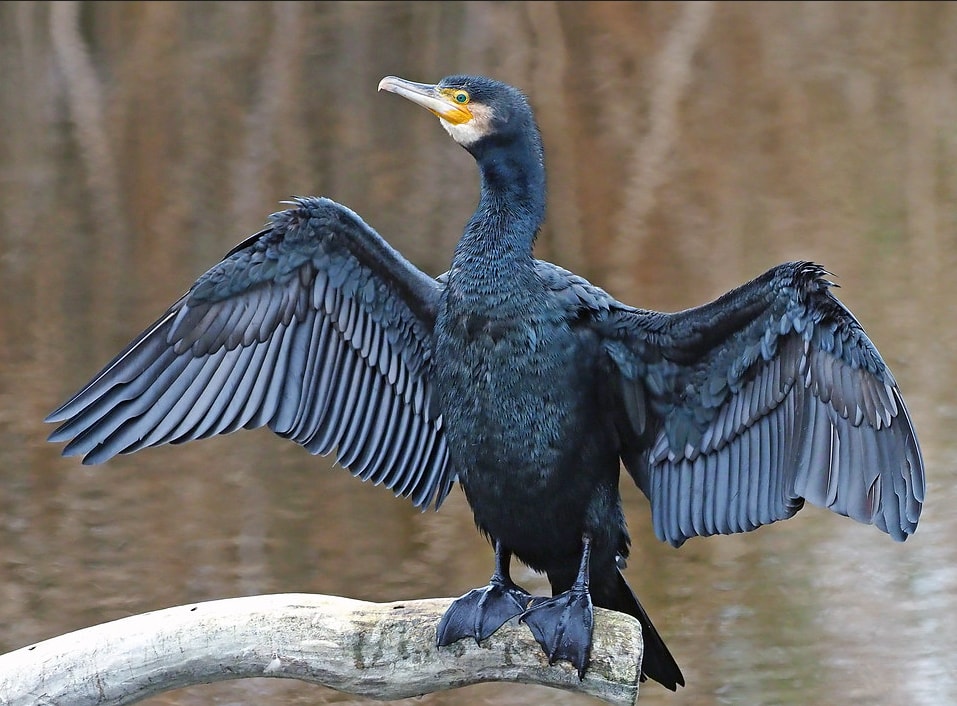
Sabías qué...
The-name-of-the-cormorant-comes-from-the-union-between-the-Latin-words-corvus-and-marinus-which-means-sea-crow
CORMORANT
Scientific name: Phalacrocorax carbo
Common name: Cormorant
Order: Pelecaniformes
Family: Phalacrocoracidae
Distribution: Atlantic coast, especially in Europe and North America.
These birds related to gannets and pelicans (Pelecaniformes order), have glossy green feathers with white markings on the head, neck and sides. During the summer (breeding season) they also have white patches on the thighs. Their eyes are green, and they have a long neck and elongated beak with a hook at the end.
Their legs (black) are webbed, with a membrane between the four toes. In the case of ducks this only happens between three toes.
They lay 3-4 clear blue eggs that both parents incubate for 28-31 days. After hatching, the chicks remain in the nest for 50 days, and at 60 days they can fly perfectly. Their life expectancy is about 23 years. As adults, their size ranges between 90 and 100 cm from the feet to the head, and their wingspan can reach 160 cm.
Discover more curiosites about cormorant
As seabirds it is normal to see them on the coast, though increasingly they can also be seen inland on lakes and estuaries. Those living on the coast tend not to move far from there and nest on ledges on cliffs that are sheltered from predators, while those living in inland areas do so on trees located a few meters from the margins of rivers and lakes.
They are excellent fishers and divers, and feed on all sorts of fish. They can dive for up to a minute and to depths of 10 metres. When swimming, they keep two thirds of the body submerged and sometimes just have the head and neck above water.
The Japanese have traditionally exploited the fishing skills of these animals. Fishing with cormorant’s is traditionally known as “Ukai”. The birds are tied to a rope and a collar is placed around their neck. The diameter of the collar is just small enough to stop them from swallowing large fish.
As this fishing is done only at night, the fishermen use large lamps to attract fish to the light. Once a cormorant has caught a fish, the fisherman pulls it back to the boat and removes the fish from its throat. This technique is used today almost exclusively for tourists.
This animal can be found next to the Underwater Restaurant, in the lake that acts as the nucleus of the different buildings.


